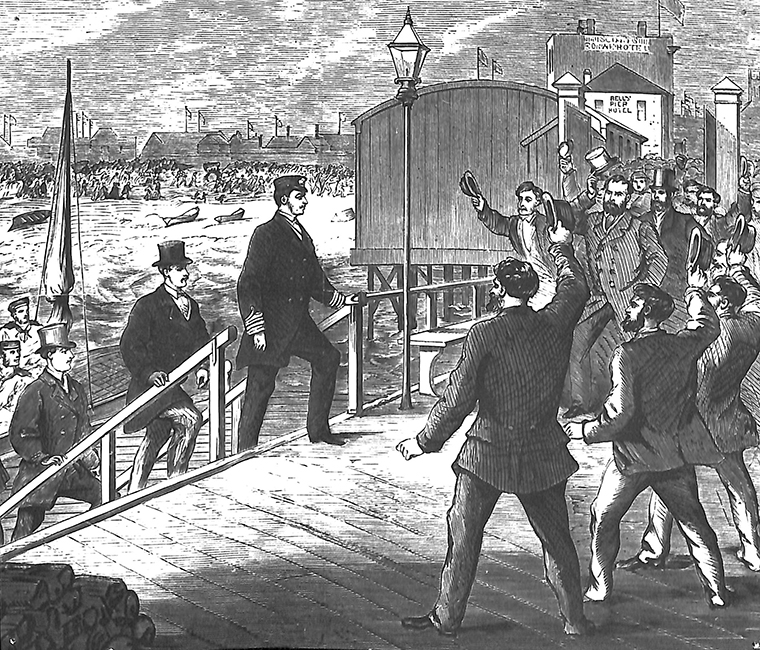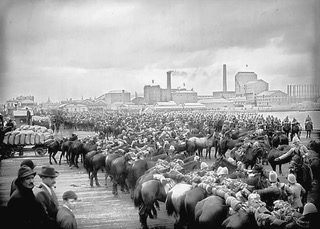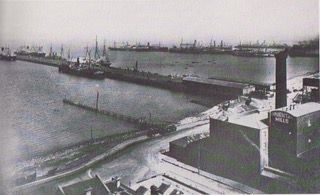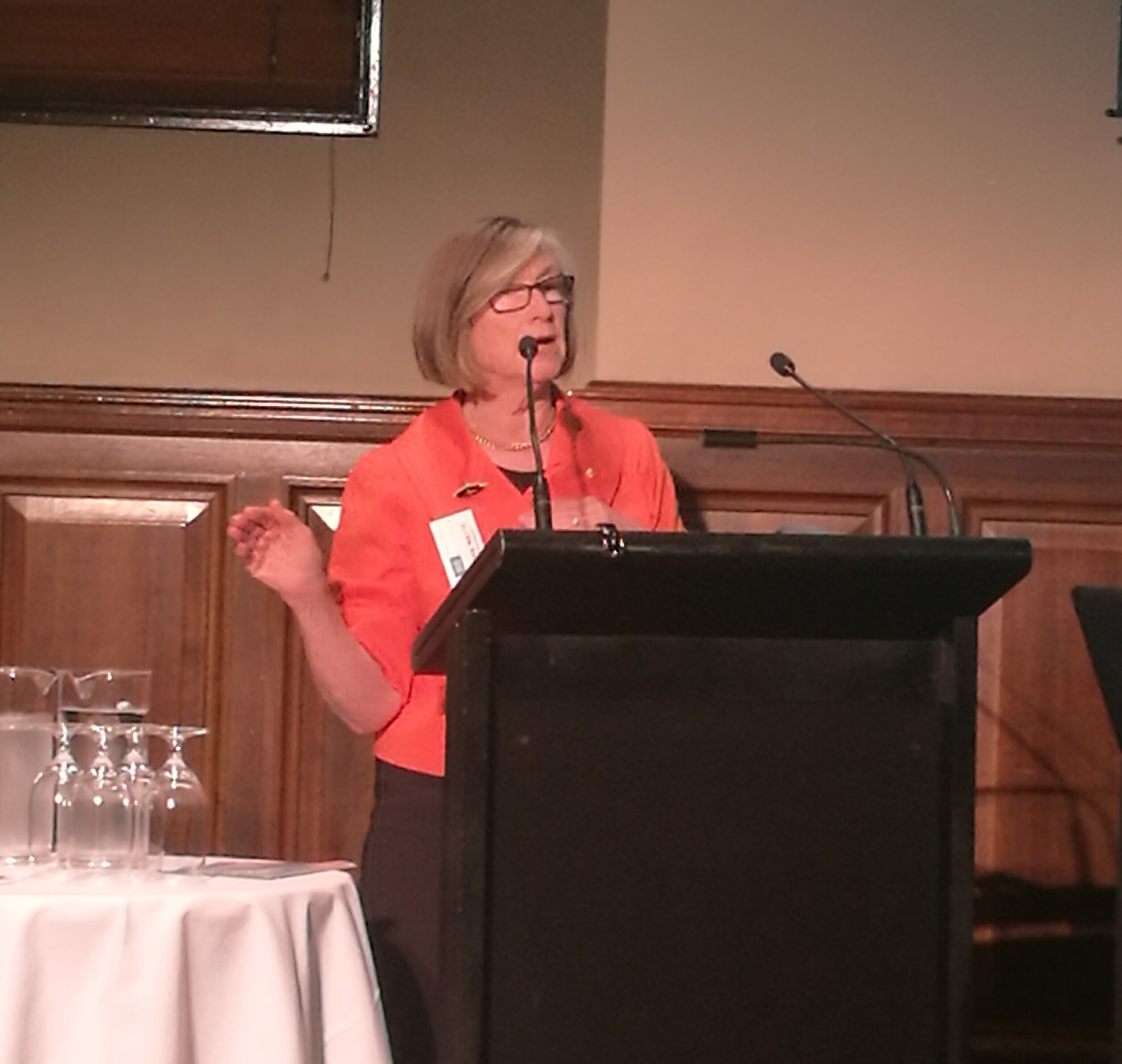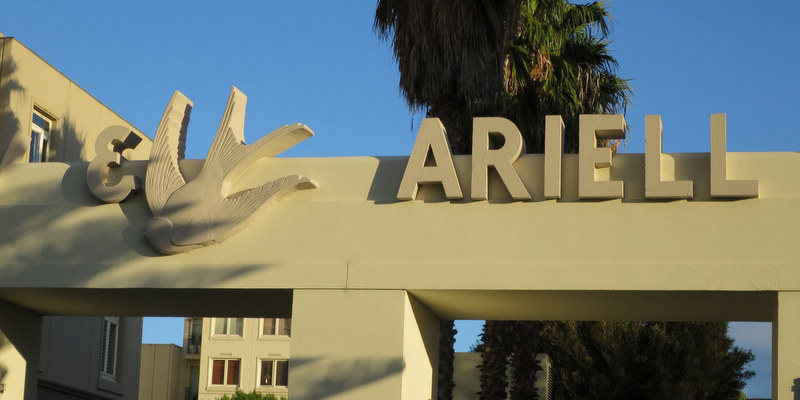Town Pier
by Margaret Bride
For over 100 years Town Pier jutted out to sea from the end of Bay Street an extension of the route from the city of Melbourne to the ships in Port Phillip Bay. This was the site of the first small jetty built by the Liardet family soon after they built their Pier Hotel.
The little jetty was replaced in 1849 by the government built Town Pier, originally only 400 feet long and 15 feet wide in 8 feet of water at high tide. It provided berthage for up to 6 small ships. Over the years it was enlarged a number of times.
In November 1867 the Galatea berthed and His Royal Highness Prince Alfred, Duke of Edinburgh disembarked to begin the first Royal Tour of Victoria.
The original plan had been for him to arrive at the St Kilda Pier but there was insufficient depth of water. Needless to say, the change of plans caused an angry reaction from the residents of St Kilda.
Town Pier was mostly used for landing coal, but also timber, flour and sugar. In 1901 it was used by the military expedition going to South Africa to fight in the Boer War.
In the photo above you can see a shed built on the sand at the pier entrance and behind that Morley’s Coal Depot can be seen as well as the two chimney stacks further along Beach Street.
For many years the coal was transported from the end of Town Pier to the gasworks by tram. Loose lumps of coal frequently rolled off and were rapidly collected by local boys either to fuel their stove at home or to be sold. Tippo Hayes was born in 1906, tells about this:
Down the piers – there was only two piers in Port, the Railway Pier and the old Town Pier, the coal boats used to come in and … run around on the tram to the gasworks. … And occasionally in’d come a rice boat with cargo of rice, for Harpers. So we’d operate on that, too, and get rice and sell it to anyone that had chooks. There was a few timber boats come in, square riggers and that, down the end of Town Pier, and we used to go fishing through the cracks and get a few fish.
“They Can Carry Me Out”, p11
Another well known resident of Port Melbourne, Emily Lock, also remembered Town Pier as it was in her childhood in the early 1920s:
My earliest memory of the waterfront at Port is of walking down the old Town Pier at the foot of Bay Street, holding onto my father’s hand to step over the spaces between the planks of the pier and the coiled ropes from the sailing ships.
“They Can Carry Me Out”, p70
During both world wars it was used to berth troop ships but by the end of World War 2 it was becoming obsolete and no further repairs or upgrades were made. By 1954 the demands for its demolition were becoming louder as this report of a speech by Councillor Purchase at a Port Melbourne Council meeting illustrates:
… it was at present being used by a stevedoring firm for the storage of gear, but that it was unsightly and almost useless, and should be pulled down. If the rotting piles, etc, could be removed, steps could then be taken to clean up the beach in that area and make it an ornament to the city …
The Record, 18 Sep 1954
Shortly afterward it was demolished and the site used by the Port Melbourne Yacht Club. Unfortunately the club house and boat storage that they built at that time was destroyed in a spectacular fire in February 1990. Their present facility was built on the same site thus making sure that boats still come and go on the site of the Town Pier.


